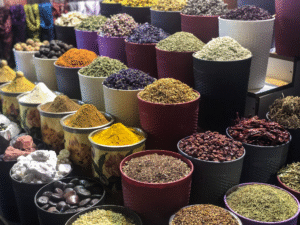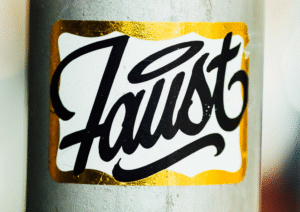

What is Coffee Culture?
Coffee culture is something unique to each region and country across the globe. It can be seen as a way of life, from where people source their coffee, how they prepare it, the conversations they have over it, and the places that serve it. It has been an integral part of many societies for centuries, and its impact on society is still ongoing.
Coffee is an incredibly diverse drink. It comes in many forms, from pre-ground to freshly roasted beans that need to be ground at home. There are so many different types of brewing techniques that result in a wide range of cups of coffee; espresso, cappuccino, latte, macchiato, cold brew, and more.
Coffee culture transcends the popularity of the drink itself and is deeply embedded in the cultural history of many countries. As the population around the world becomes more mobile, this culture is quickly becoming international, with different regional varieties finding their way into almost all corners of the globe.
Why is Coffee Culture Interesting?
Coffee culture is an interesting topic to explore for multiple reasons. One of the reasons is that it paints a picture of how coffee has been used throughout history and how it shapes everyday life in different countries. Coffee is central to many cultures, which means its history is also important to better understand the culture within a particular region or country. Moreover, it exposes the reader to the different methods of preparing, serving, and consuming coffee.
Coffee culture is also a great way to learn more about other cultures. By learning about the coffee culture of different nations, one can gain an appreciation for the various customs and practices associated with coffee. This knowledge can help foster a greater understanding and appreciation for cultural diversity.
On top of that, coffee culture is an interesting way to explore different flavor profiles associated with different countries. Different regions around the globe have their own distinct coffee styles associated with them, and learning about them can help to expand one’s palate.
Coffee Around the World
Coffee is one of the oldest and most widely enjoyed beverages in the world, with different countries and regions embracing it in various forms. Countries such as Turkey-Middle East, Italy, France, and more have adopted coffee as part of their culture and use it as a staple of everyday life.
In Turkey, coffee is served black and very strong. It is often shared among friends and family during social gatherings, sometimes with a large cup being shared between two people. Italians have their own special version known as espresso, made with a powerful machine that creates a thicker and stronger brew. Espresso is usually served in small cups for a quick pick me up. In France, French Press is the preferred method of preparation. This involves steeping the coffee grounds in boiling water for several minutes before slowly pressing them out and pouring the beverage into a cup.
Each region has its own unique coffee culture, including the types of beverages served, types of beans used, and the way coffee is prepared. By understanding each aspect of these cultures, one can truly appreciate the art and beauty of coffee around the world.
Historical Significance of Coffee Culture
Coffee has a long and fascinating history that spans centuries. It is believed to have originated in Ethiopia in the 9th or 10th century, when it was first discovered by a goatherd named Kaldi. He noticed that his goats had more energy after eating a certain type of berry found in the region, which he soon identified as coffee beans. From there, the coffee plant spread to the Middle East, where it quickly picked up popularity and made its way further around the world.
By the 15th century, coffee had spread to Italy, Germany, Austria, and even England. As it gained in popularity, it began to take on different forms based on the cultural preferences of each country. For example, in Italy, espresso quickly became the preferred method of drinking coffee, while in France, people would often press the beans for a stronger flavor. Meanwhile, in the United States, the classic drip coffee was popularized and remains the most popular form today.
Today, coffee has become an essential part of many cultures around the world. Countries like Italy, Norway, Finland, and Turkey are all known for their vibrant coffee cultures, and in places like Australia, the cafe has become an integral part of the landscape. No matter where you are in the world, you can find a unique coffee experience to take part in.
Public Coffee Formats
Coffee can be found in numerous places, from the traditional cafe to the convenience of drive-thrus. Cafes are one of the most popular forms of enjoying a cup of coffee and offer a great atmosphere for both work and leisure. The ambiance of cafes can vary from cozy and intimate to larger, vibrant spaces. For those on the go, drive-thrus offer quick and easy access to a cup of coffee. Customers can get their order without having to leave their car, which makes it ideal for busy mornings. Other retail establishments such as restaurants, grocers, and convenience stores also offer brewed coffee, giving a variety of different options for coffee lovers.
It’s not just cafes and drive-thrus that provide coffee, there are plenty of other ways to enjoy it as well. At-home brewing systems are becoming increasingly popular. With the wide variety of machines available, from single-serve pods to full espresso machines, it is easier than ever to make tasty coffee at home. Additionally, many online coffee subscriptions have also emerged, allowing customers to easily purchase their own beans straight from their favorite coffee shops.
Learning About Coffee Culture and its Aesthetics
Coffee culture has been around for centuries, but it has become increasingly popular in recent times. It can be thought of as the experience that surrounds a cup of coffee, whether it be the cafe’s atmosphere, the type of beans used, or the design and aesthetic elements that make up the culture. From logos to menu boards, each element plays an important role in creating the overall feeling of a particular cafe.
Logos are often used to identify a particular cafe, and these can be seen everywhere from paper cups to billboards. They are generally simple in design, often featuring images of coffee beans or a coffee cup. Menu boards are also an important element, as they provide customers with information about the various types of coffee drinks available. These can range from traditional coffee offerings to unique drinks like lattes or frappes.
In addition to logos and menu boards, many cafes have additional design elements that add to the overall atmosphere. For example, some may feature rustic furniture or decor, while others may opt for modern and industrial designs. Even the cups themselves can be designed to reflect the cafe’s identity, with unique shapes and sizes being used to differentiate one cafe from another.
Aesthetic elements are important not only because of their visual impact, but also because they can create feelings of comfort or familiarity. By paying attention to the design elements of a cafe, one can instantly get a sense of what that particular cafe is all about. Whether it’s a traditional Italian espresso bar or a more modern, trendy cafe, the design elements can often tell us a lot about the culture of the place.
Working Environments
Coffee culture has been embraced in a variety of work and office settings throughout the world. From coworking spaces to traditional coffee shops, there are so many places that have adopted this culture. Coffee shops are an increasingly popular hangout spot and open workspace for freelancers, entrepreneurs, and creatives. They offer an atmosphere that is conducive to productivity and creativity, with a wide variety of hot and cold beverages, snacks, and amenities like power outlets and wifi.
Coworking spaces are a great alternative for those who prefer a more organized and structured workspace. These offices are usually located in larger cities and are perfect for those who need a dedicated and refined space to get their work done. Many coworking spaces now even offer specialty coffees and tea blends that cater to the ever-growing need for caffeine as well as providing a cozy atmosphere for their members.
Innovative new shared workspaces or collaborative areas are emerging all over the world. Creative hubs, such as startup incubators, provide budding entrepreneurs and innovators with the resources they need to grow and develop their ideas. Many of these hubs also offer a cafe-style worked environment, complete with quality beverages and pastries. This has helped to create an environment that is conducive to creativity and collaboration.
Aesthetics vs. Mentality
When it comes to coffee culture, different countries, regions, and cities can portray it in very unique ways. This is due to their collective mentality and how they embrace the social aspects of coffee drinking. In some places, coffee is seen more as a form of leisure and as a way to gather together, while in other locations, it’s viewed more as a way to stay productive. In some places, café environments might be more focused on aesthetics such as art and design, while other places may place more emphasis on the quality of coffee itself.
For example, in certain areas in Italy, cafes are known for their rich history and vibrant designs that add to the ambiance of the coffee experience. Meanwhile in Scandinavian countries such as Sweden, Norway, and Finland, you may find more modern looking cafes that are designed with productivity in mind.
It is also important to note that in some regions, enjoying coffee is about more than just the beverage. For instance, in Latin America, coffee-drinking is seen as a way to share stories or cultural experiences. These regions often have more relaxed and informal environments that bring people together.
Overall, the way coffee culture is portrayed can vary greatly around the world. It can depend on the culture, the geography, the economic situation, and many other factors.
Regional Trends in the Coffee Culture
From cozy cafes in Japan to the coffee-rich landscape of Italy, every region has its own unique coffee culture. The world of coffee is constantly evolving and changing, from regional trends and innovations in brewing techniques to the different preferences for flavor or strength.
In Europe, an undying love for a classic espresso can be found. Italy remains the center of espresso culture, with chain stores like illy and Lavazza leading the way for standardization of recipes while also maintaining Italian traditions. Meanwhile, France continues to be a pioneer of café experiences, with over 50,000 cafés across the nation offering a unique twist on coffee.
In Asia, the coffee scene is quite varied. From robusta-based coffees of Vietnam to the selection of oat milk-based lattes available in Japanese specialty coffee shops, there’s something for everyone. Japan has particularly embraced specialty coffee culture in recent years, with an emphasis on taste and craftsmanship.
For those on the West Coast of the United States, popular trends are focused around light roasts, pour overs, and cold brews. As larger cities come to cultivate their own coffee cultures, newer trends appear that focus on sustainability and environmental consciousness. In Minneapolis, for example, a movement has been launched to create a “Green Coffee City” where all coffee is sourced, roasted, and served in a sustainable and ethical manner.
As coffee lovers explore the world, the possibilities for discovering new trends in coffee culture are endless. With new flavors, brewing methods, and types of coffee available, coffee culture will continue to evolve and thrive.
Coffee culture has gone through many advancements in technology over the years and these developments have changed the way we consume and enjoy coffee. From grinding beans to frothing milk, technology has made it easier than ever to brew delicious drinks with ease.
One of the most significant technological advancements in the coffee industry is espresso machines. This equipment uses pressure and steam to force hot water through finely ground coffee beans and create flavorful shots of espresso. These machines are now commonplace in cafes and restaurants across the globe.
Another technology that has revolutionized coffee production is the automatic drip machine. This device uses a filter with finely ground coffee beans and hot water, allowing for a precise balance between the two. By controlling the temperature and timing of the process, this machine can create consistent, high-quality cups of coffee, perfect for busy establishments.
In recent years, automated pour-over coffee makers have become popular for home use. Featuring a glass or ceramic vessel equipped with an adjustable pouring spout, this device allows the user to control the flow of the water over the grounds, creating a higher degree of customization.
Finally, several innovations have been implemented in the area of milk frothing. From automatic steamers to handheld milk frothers, coffee lovers have access to many different types of frothing methods to create extra creamy coffee drinks.
These are just a few of the many examples of modern technologies that have become integral to the coffee industry. With advances occurring every day, the possibilities for innovation and excellence seem limitless.
Regulatory Variations
Many countries have their own regulations when it comes to coffee culture. In the United States, for example, the FDA has certain requirements that must be adhered to with regards to food safety and quality. Some states may also have additional restrictions on the sale of coffee products, such as in California, where there is a statewide ban on single-serve coffee pods.
In European countries, there are often regulations that require coffee served in cafes to be freshly ground. There are also different requirements depending on the country, with most European countries having their own laws on the production and sale of coffee.
Japan has one of the most strict regulations around coffee production, with roasting and brewing being heavily regulated by the Japanese government. Similarly, in some Middle Eastern countries, coffee shops may have to operate within certain limited hours due to local custom.
No matter where you go, it’s important to be aware of the local regulations when it comes to producing and selling coffee. It’s also helpful to understand the cultural nuances that come with different coffee cultures, as this can help inform your own purchasing decisions.
Coffee culture is the social atmosphere and customs that revolve around the beverage. The practice of drinking coffee has been around for centuries, but in recent years, it has grown into a cultural phenomenon. This guide has explored the different variations of coffee from around the world, the historical significance of coffee, the different formats and aesthetics used to create coffee culture, and the current trends happening around the globe.
From the traditional Turkish/Middle Eastern version of coffee, to Italian espresso, Chai Latte, and French press, we have seen how each region brings its own flair and unique style to this iconic beverage. Additionally, the guide touched on the public coffee formats, the aesthetic elements used to create the culture, the different workspaces that have been infused with a coffee culture, the regional trends, technological advancements, and various regulations that are implemented depending on the country or region.
Overall, it is evident that coffee culture is a diverse and ever-evolving phenomenon. Through its history and modern-day customs, coffee has been able to unite people across the world. With the ongoing developments in coffee technology and the rising popularity of specialty drinks, it is clear that this trend will continue to thrive in the coming years.
Resources & Sources
Throughout this guide, we have mentioned many sources of information that were used to create this guide. In this section, we will list all the websites, statistics, and other sources that were mentioned.
- Coffee: A Guide To Buying, Brewing, and Enjoying (Amazon)
- Global Coffee Market 2019-2023 (Statista)
- National Coffee Association of U.S.A
- International Coffee Organization
- Seattles Best Coffee
- Starbucks
- And more…
By referencing these sources, you can dive deeper into the world of coffee culture and get a better understanding of the different aspects of the industry.
comments: 0








